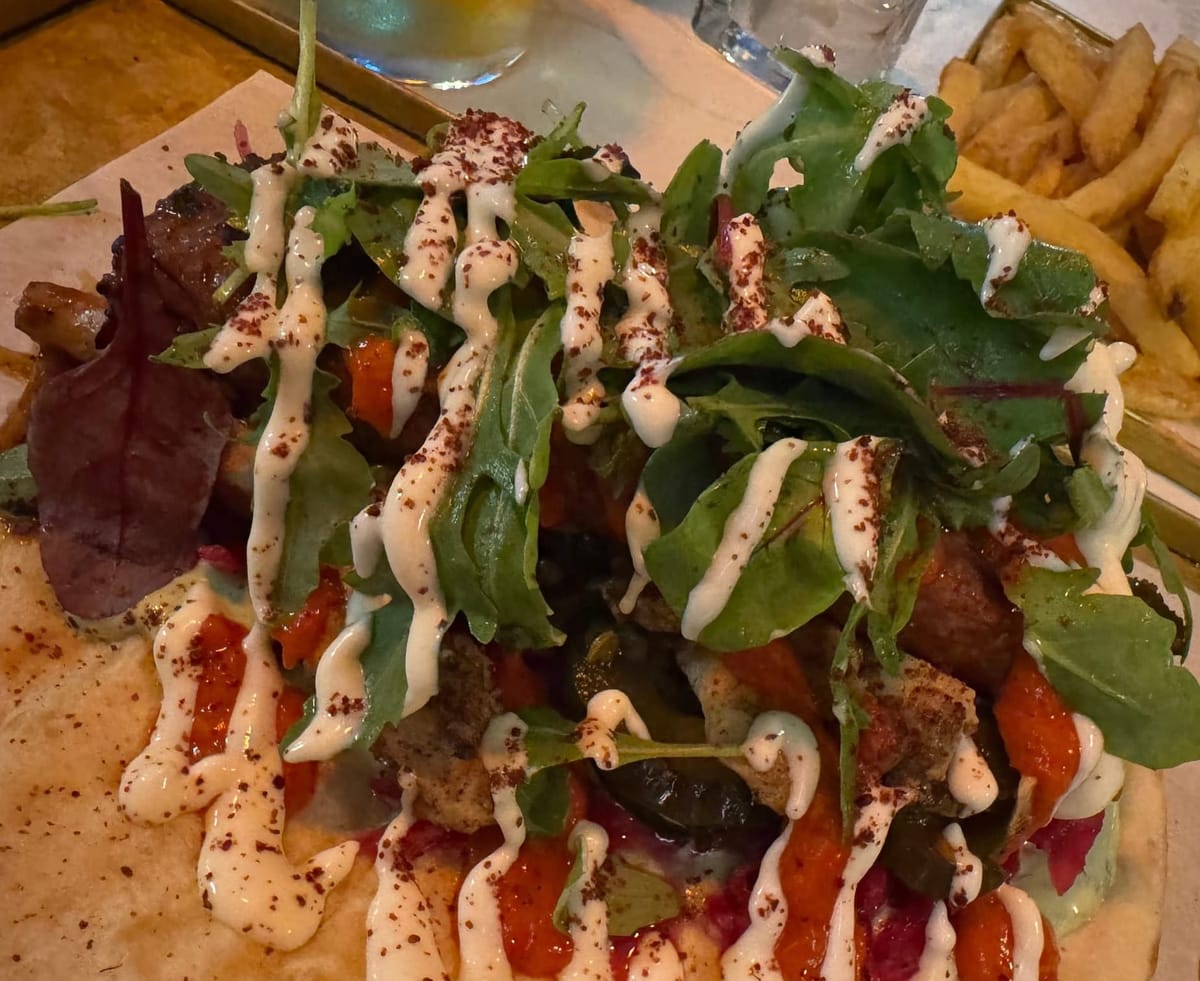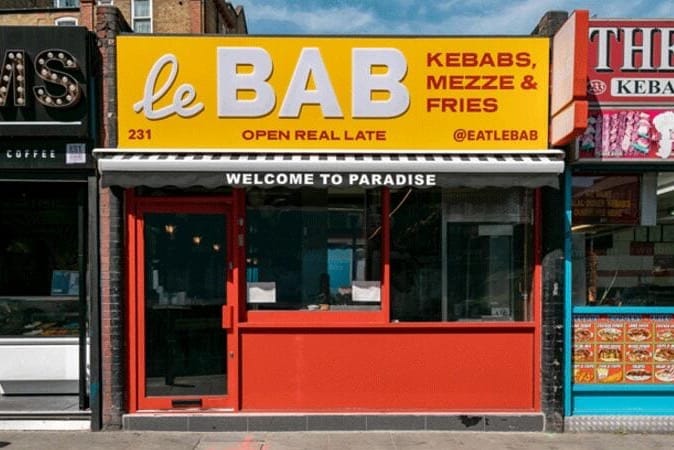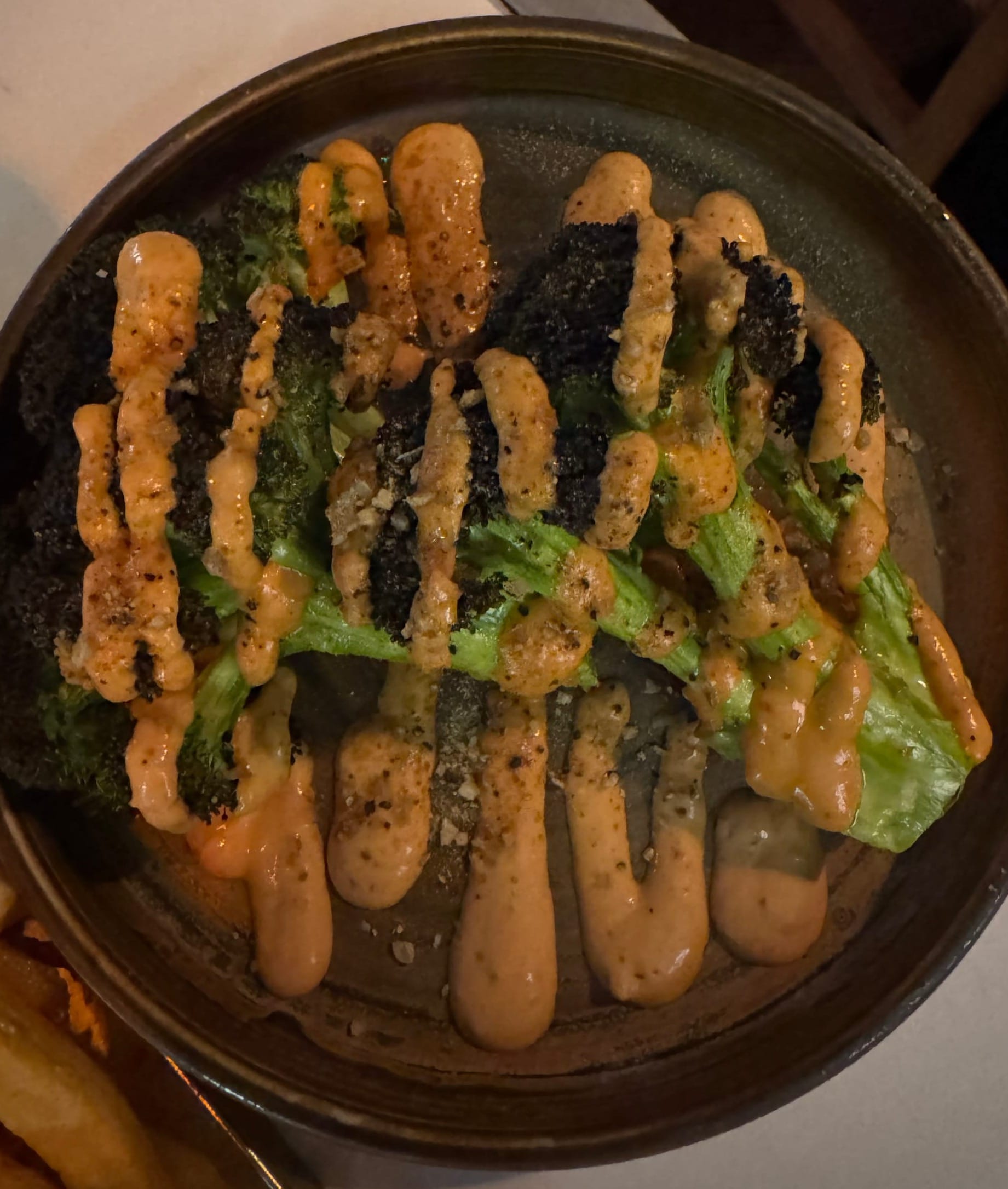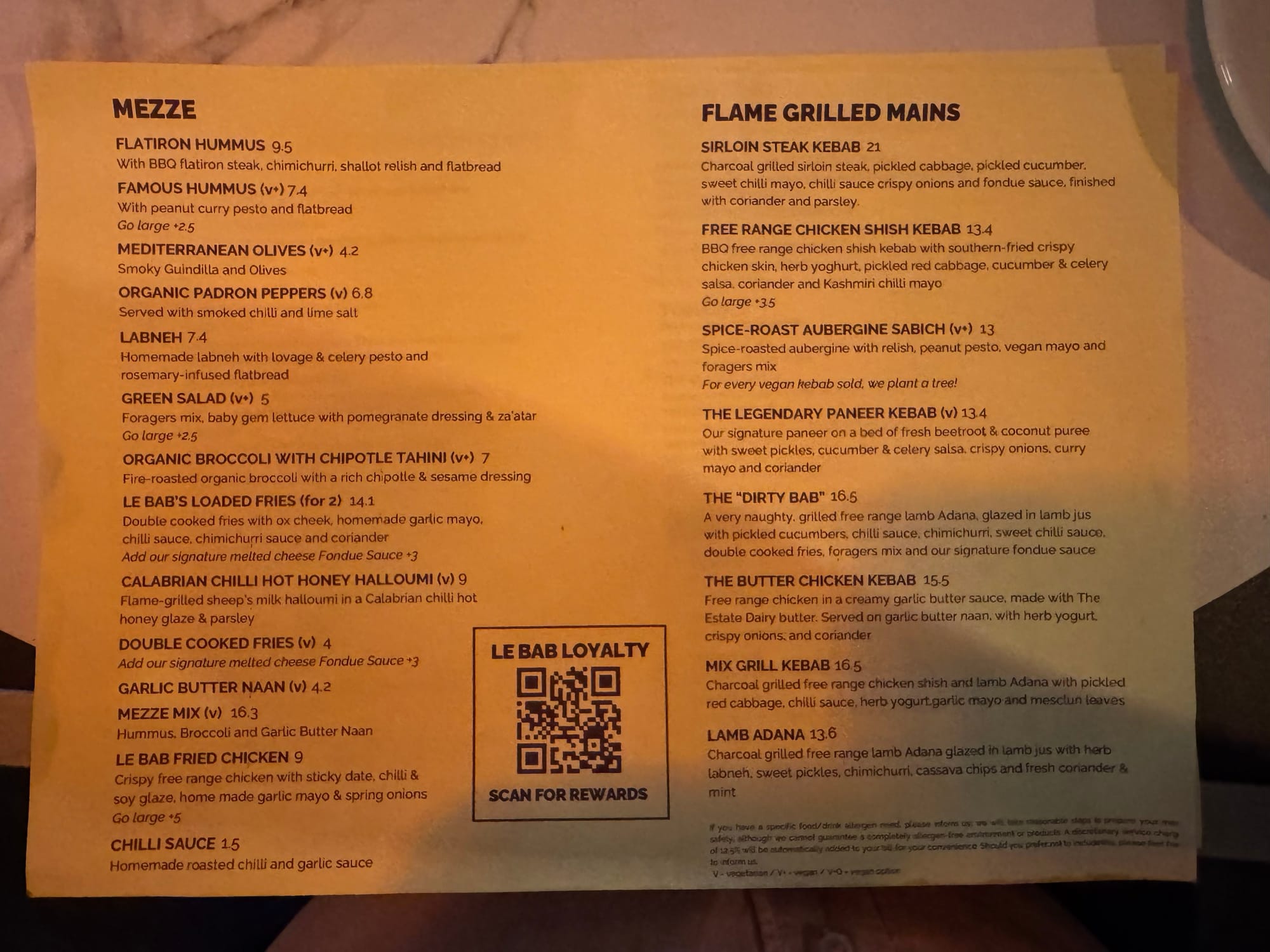Le Bab's Evolution from Daring to Dependable

There's something genuinely sad about watching an excellent restaurant that you love become merely good. It's like watching a wild creative spirit settle for a comfortable path, trading boundary-pushing ambition for bankable reliability. Everything looks fine on paper – and it's probably much more financially successful. But reliability and prudence are attributes I look for in my bank, not my favorite restaurant. And with Le Bab, something essential is being lost.
To be clear: Le Bab still makes excellent food. The kitchen knows exactly when to pull lamb from the heat, resulting in meat that's perfectly juicy. Their flatbreads remain proper vehicles for their toppings, and their sauces perform a kind of culinary magic trick – somehow tasting of two distinct things at once, creating flavours that dance between sweet and sharp, creamy and zingy.
And yet.
I discovered Le Bab through their cookbook, 'The Modern Kebab' – a guide to reinventing what many people only consider a late-night food. A thorough and positive review of the recipe book will follow in a future post. I bought it partly because of the funny name. The recipes are consistently delicious and approachable, working beautifully in the pan, or under the grill, but absolutely singing when cooked over coal.
It was the restaurant itself, though, that truly showcased their ambition. My first visits revealed daring creations like pigs' head and crackling kebabs paired with refreshing kohlrabi, and roe deer adana alongside kimchi and blackberry chilli jam. These weren't just meals; they showed how something familiar could become extraordinary.
During the brief window between lockdowns in summer 2020, I ate at their (now closed) Old Street branch with my wife and had a Lamb Madras Adana that I still remember vividly – perfectly spiced lamb on cooling yoghurt with crunchy Bombay mix and fresh coriander. My wife had a pork shawarma with toppings inspired by pepperoni pizza – a combination that had no right to work as well as it did. The excitement of discovery, the thrill of tasting something genuinely innovative – this was dining that mattered.

Jump to 2025, and the menu reads like a standard kebab house's greatest hits. "Now That's What I Call Mücver". Chicken shish. Lamb adana. Yes, done exceptionally well, but without any surprises. The technical skill is still evident – that char-grilled tahini broccoli side dish is so good I'd fight you for the last portion – but the sense of adventure has disappeared under the weight of commercial reality.

In a 2022 interview, founder Stephen Tozer explained that the high-end offering of Le Bab was too complicated to do at scale, while their more casual Maison Bab concept was too close in price to the premium brand. The business reasoning makes perfect sense. But what happens next is what worries me as a diner.
When restaurants choose the path of standardisation and scale over creativity, they presage a depressing trajectory. Today's "simplified for efficiency" becomes tomorrow's "cut corners to boost margins." Soon enough, the chef replaces his hand written recipe ideas notebook with an operations manual. The hand-cut chips give way to a frozen product that's "just as good, honestly." The magic sauces that taste of two things at once are replaced by something pumped from a plastic tub delivered by a national distributor.
This is the pernicious logic of chain expansion. Each step away from the original vision is justified as a necessary compromise, until one day you realise you're essentially eating at a slightly posh version of any high street kebab shop, paying a premium for nothing but the memory of what once was.
I understand the realities. Restaurants run on thin margins. Complexity costs money. Consistency matters. But when you've shown people what's possible – when you've published an entire book demonstrating how creative a kebab can be – settling for merely good feels like a betrayal of your own potential.
There's still time to reverse course. Le Bab could rediscover its innovative spirit, could recognize that while playing it safe might be good for this quarter's numbers, it's a death sentence for long-term relevance. Rather than asking "how can we make this simpler to scale?" perhaps they should be asking "how can we make this even more extraordinary?" The cookbook that first drew me to them holds the answer – it's filled with audacious combinations and unexpected techniques that could reinvigorate their menu.
I appreciate the perfect cooking and balanced flavours that still define Le Bab's offerings. But as someone who's cooked from their book perhaps a hundred times and eaten at their restaurants at least a dozen, I'm grieving the loss of what made them special. When I eat out, I want food I can't make at home. I want a chef's vision, not a focus-grouped menu designed for maximum operational efficiency.
Le Bab is still worth your time and money – for now. But I fear an increasingly bland future at Le Bab unless they rediscover a creative spark. The passion and innovation that made me fall in love with them in the first place have been systematically excised in service of scale. I only hope they realize what they've lost before it's too late to get it back.

Rating: 10.....9.....8....7....6/10 – Technically excellent execution of increasingly ordinary ideas. The kebabs are good, but the restaurant has forgotten what made it great.